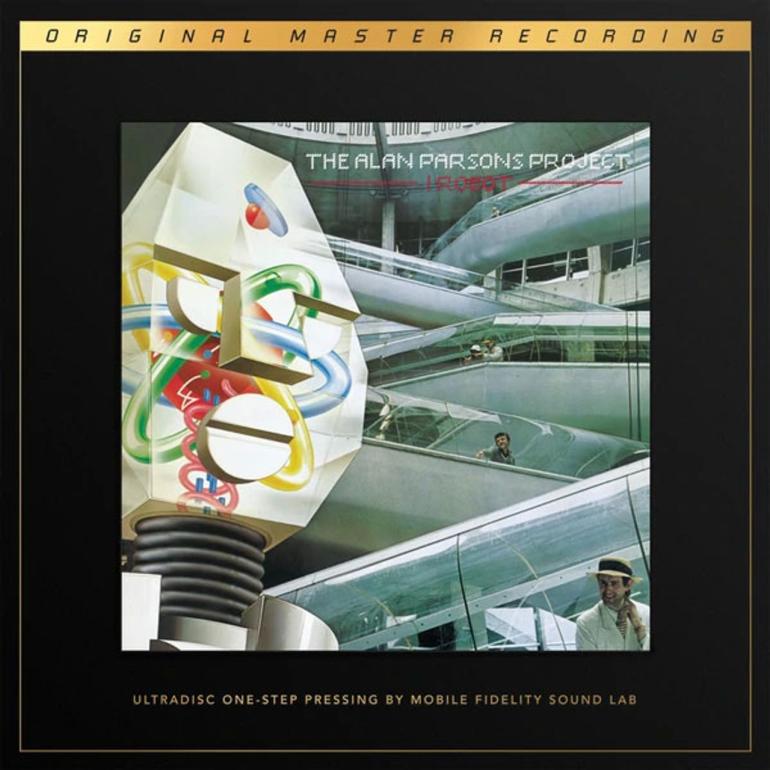Restiamo in contatto
The Alan Parsons Project - I Robot -- Cofanetto 1 LP 33 giri 180 gr. - SuperVinyl - Edizione Limitata e Numerata - MOFI - Made in USA - SIGILLATO
The Alan Parsons Project - I Robot -- Cofanetto 1 LP 33 giri 180 gr. - SuperVinyl - Edizione Limitata e Numerata - MOFI - Made in USA - SIGILLATO
OMR0339LP
Descrizione
.gif) | .gif) | ||
| Etichetta | mobile fidelity sound lab original master recordings 041 | Label | |
| Titolo | The Alan Parsons Project | Title | |
| Artista | I Robot | Artist | |
| Tracklist | VEDI descrizione ( e/o foto) | SEE description (and/or photos) | Tracklist |
| Vinile | SIGILLATO | SEALED | Vinyl |
| Cover | SIGILLATO | SEALED | Cover |
| Supporto | LP 33 giri 180 gr | LP 33 rp180 gr | Support |
| Made in | USA | Made in | |
| Stampa del | 2022 | Pressing | |
| Edizione Limitata Numerata | SI | Numbered Limited Edition | |
| Note Descrizione | Special Audiophile Edition 33rpm 180g Vinyl LP! Perfectionism, Innovation, and Reference-Setting Production Make the Alan Parsons Project's Conceptual I Robot a Timeless Classic: Sci-Fi Prog-Rock Landmark Steeped In Drama Mastered from the 1/4" / 15 IPS Analog Master to DSD 256 to Analog Console to Lathe, Strictly Limited to 10,000 Numbered Copies, and Housed in an Elegant Slipcase: Mobile Fidelity's UltraDisc One-Step 180g 33RPM LP Elevates the Audiophile Standard While Offering One-Flip Convenience Experience Immaculate Highs and Lows, Supreme Spaciousness, See-Through Transparency, and 3D Imaging: Dead-Quiet MoFi SuperVinyl LP Features Nearly Inaudible Noise Floor Most audiophiles know Alan Parsons Project's I Robot by heart. Engineered by Parsons after he performed the same duties on Pink Floyd's Dark Side of the Moon, the 1977 record reigns as a disc whose taut bass, crisp highs, clean production, and seemingly limitless dynamic range are matched only by the sensational prog-rock fare helmed by the keyboardist and his creative partner, Eric Woolfson. Not surprisingly, it's been issued myriad times. Can it be improved? Relish Mobile Fidelity's stupendous UltraDisc One-Step 180g 33RPM box set and the question becomes moot. Mastered from the original analog master tapes, pressed at RTI on MoFi SuperVinyl, and strictly limited to 10,000 numbered copies, I Robot comes to life with reference-setting realism on this numbered, limited-edition reissue. Boasting immaculate highs and lows, generous spaciousness, and see-through transparency that takes you into the studio with Parsons and Woolfson at Abbey Road, this definitive edition is designed to demonstrate the full-range capabilities of the world's best stereo systems while offering listeners the convenience of having all the music on one LP. Featuring a nearly inaudible noise floor, this transcendent UD1S edition functions as a repeat invitation to savor reference-grade soundstages, immersive smoothness, sought-after instrumental separation, three-dimensional imaging, and consummate tonal balances. Able to be played back at high volumes without compromise or fatigue, it is a demonstration record for the ages – the likes of which are no longer being made. This is the very reason you own and invest in high-end audio gear. The special characteristics of this UD1S version extend to the premium packaging. Housed in an elegant slipcase, the reissue features a special foil-stamped jacket and faithful-to-the-original graphics. Aurally and visually, it is made for discerning listeners who prize sound quality and production, and who desire to fully immerse themselves in everything about this conceptual landmark. The Alan Parsons Project's most famous record deserves nothing less. Inspired by and loosely based around the Isaac Asimov stories of the same name, I Robot delves into themes of artificial intelligence and technological dominance that make the record extremely relevant in the 21st century. Indeed, Parsons and Woolfson's pinnacle creation dovetailed with the ascendency of Star Wars, which itself is experiencing a rebirth in an age of self-driving cars, smart devices, and mindless automation. Lyrically, songs such as "The Voice" call into question human behavior – and their relationship to increasing robotic supremacy – in everyday life. Parsons and Woolfson reflect the associated paranoia, dichotomy, and transformation via shifting sci-fi arrangements steeped in drama and moodiness. The absorbing tunes on I Robot also continue to fascinate due to their perfectionism and innovation. Borrowing from Pink Floyd's strategies, Parsons and Woolfson utilize a looped sequence on the title track to create new downbeats. "Some Other Time" employs two different lead vocalists and yet gives the illusion that only one is involved. Captivating strings, a piccolo trumpet, and bona fide pipe organ grace "Don't Let It Show." The origins of "Nucleus" stem from a unique analog keyboard concoction dubbed "the Projectron," devised by Parsons and electronic engineer Keith Johnson. Andrew Powell's orchestral and choral arrangements top it all off, with "Total Eclipse" arriving as a frightening track that presages the climactic "Genesis Ch. 1 V. 32." Does man or machine win in the end? Decide as you get lost in Mobile Fidelity's UltraDisc 180g 33RPM LP pressing. More About Mobile Fidelity UltraDisc One-Step and Why It Is Superior MoFi SuperVinyl Features
Selections
| Notes Description | |
